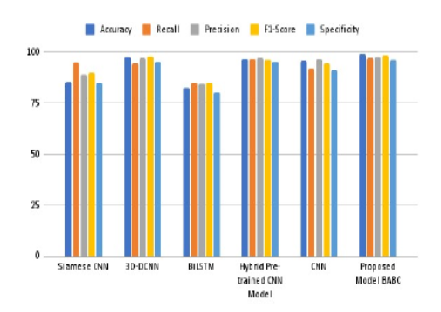


Indian Journal of Science and Technology
Year: 2024, Volume: 17, Issue: 1, Pages: 26-37
Original Article
P Dinesh Kumar1*
1Teacher in Design Technology, Oberoi International School, Mumbai, Maharashtra, India
*Corresponding Author
Email: [email protected]
Received Date:05 September 2023, Accepted Date:03 November 2023, Published Date:05 January 2024
Objectives: This study aims to develop a robust diagnostic model for Alzheimer's Disease using a curated MRI dataset from Kaggle, integrating the BABC algorithm with a Random Forest classifier for precise classification. Methods : Feature extraction employed a modified LeNet model, effectively capturing crucial low-intensity pixel information. Additionally, the study integrated a binary version of the BABC algorithm for streamlined feature selection, enhancing data dimensionality and overall model efficacy. Findings : The study's findings mark a notable breakthrough in Alzheimer's Disease (AD) diagnosis. The model, which seamlessly combines the Biologically Inspired Artificial Bee Colony (BABC) algorithm and the Random Forest (RF) classifier, achieved an impressive accuracy of 98.97%. Furthermore, it exhibited a high recall rate of 97.22% and maintained precise precision at 97.59%. The robust F1-Score reached 98.63%, and a noteworthy specificity of 96.12% highlighted the model's ability to accurately classify diverse AD stages. Notably, the incorporation of a comprehensive confusion matrix enriched the study, offering profound insights into the model's predictive prowess. This comprehensive evaluation underscores the model's reliability and effectiveness in identifying various AD stages, positioning it as a promising tool for clinical diagnosis and research in neurodegenerative disorders. The proposed study's diagnostic model facilitates early intervention and effective treatment by identifying individuals at risk of Alzheimer's disease through cognitive assessments, neuroimaging, and biomarker analysis. Novelty: The integration of BABC with RF enhances AD diagnosis, promising improved accuracy and specificity, and fostering more effective management and treatment strategies.
Keywords: Alzheimer's disease, Deep Neural Network, Magnetic resonance imaging, Machine learning, Random Forest
© 2024 Kumar. This is an open-access article distributed under the terms of the Creative Commons Attribution License, which permits unrestricted use, distribution, and reproduction in any medium, provided the original author and source are credited. Published By Indian Society for Education and Environment (iSee)
Subscribe now for latest articles and news.